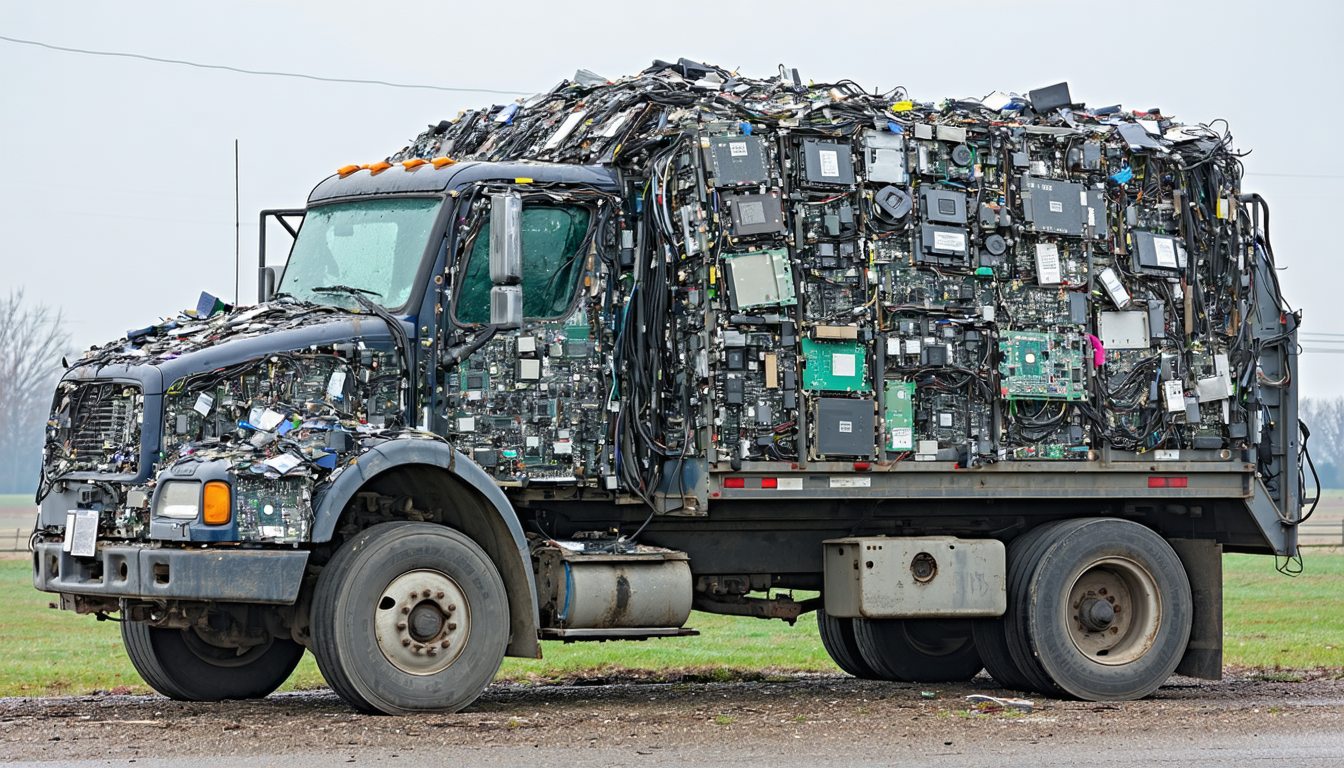Introduction
Electronic waste, or e-waste, is one of the fastest-growing waste streams in the United States, with millions of tons discarded annually. As technology advances, outdated devices pile up, creating environmental and health hazards at e-waste sites across the country. This article explores the current state of e-waste management in the U.S., highlighting key challenges, recent developments, and innovative solutions. From regulatory updates to community initiatives, we delve into how stakeholders are addressing this pressing issue and what it means for the future of sustainable waste management.
The Scale of E-Waste in the United States
The U.S. generates approximately 6.9 million metric tons of e-waste each year, according to a 2022 report by the United Nations. This includes discarded smartphones, laptops, televisions, and other electronic devices. However, only about 15-20% of this waste is recycled properly, leaving a significant portion to end up in landfills or unregulated e-waste sites. These sites often lack proper infrastructure, leading to toxic substances like lead and mercury leaching into soil and water.
The Environmental Protection Agency (EPA) notes that improper handling of e-waste poses risks to both human health and ecosystems. Communities near these sites frequently report higher rates of respiratory issues and other health concerns. This growing problem has pushed policymakers and industry leaders to seek urgent solutions.
Challenges at E-Waste Sites Across the Nation
Managing e-waste sites in the U.S. remains a complex issue due to inconsistent regulations across states. While states like California and New York have robust recycling programs, others lack clear guidelines, resulting in illegal dumping and poorly managed facilities. The cost of proper recycling also deters many consumers and businesses from participating in sustainable practices.
Another hurdle is the rapid pace of technological obsolescence. Devices become outdated within a few years, overwhelming existing infrastructure. According to Dr. Sarah Bennett, an environmental scientist at Stanford University, “The sheer volume of e-waste outpaces our ability to process it safely. We need systemic changes to address this crisis.”
Recent Developments in E-Waste Management
In 2023, several initiatives have emerged to tackle the e-waste problem. The EPA launched a national strategy to improve recycling rates, aiming to recover valuable materials like gold and copper from discarded electronics. Additionally, federal funding of $50 million was allocated to upgrade facilities at key e-waste sites.
Private companies are also stepping up. Tech giants like Apple and Dell have expanded their take-back programs, encouraging consumers to return old devices for responsible disposal. Meanwhile, grassroots organizations are raising awareness about the dangers of improper e-waste handling through community clean-up drives.
Here are some notable updates:
– Legislative Push: Over 25 states now have e-waste laws, with more expected to follow by 2025.
– Corporate Responsibility: Major firms reported recycling over 2 million devices in 2022 alone.
– Public Awareness: Campaigns reached over 10 million Americans last year, promoting proper disposal methods.
Impact on Stakeholders
The challenges at e-waste sites affect a wide range of stakeholders. Local communities bear the brunt of environmental pollution, often facing contaminated water supplies. Small businesses struggle with compliance costs for proper disposal, while recyclers grapple with limited resources to handle incoming waste.
On the positive side, improved management creates job opportunities in the recycling sector. The EPA estimates that scaling up recycling efforts could generate up to 50,000 new jobs by 2030. For policymakers, balancing economic growth with environmental protection remains a critical focus.
Future Outlook for E-Waste Solutions
Looking ahead, experts predict that technological innovation will play a pivotal role in managing e-waste sites. Advances in robotics and AI could streamline sorting and dismantling processes, making recycling more efficient. Additionally, designing products with longer lifespans or modular components could reduce waste generation.
However, opinions differ on the best approach. Some advocate for stricter federal regulations to standardize practices nationwide, while others believe market-driven solutions will yield faster results. A balanced strategy that combines policy reform with industry collaboration may offer the most sustainable path forward.
Conclusion
E-waste sites in the United States represent both a significant challenge and an opportunity for innovation. With millions of tons of electronic waste generated annually, addressing improper disposal is crucial for protecting public health and the environment. Recent initiatives by the EPA, private companies, and local communities signal progress, but much work remains. By fostering collaboration among stakeholders and embracing new technologies, the U.S. can transform its approach to e-waste management, paving the way for a cleaner, more sustainable future.
Frequently Asked Questions (FAQs)
1. What are e-waste sites?
E-waste sites are locations where discarded electronic devices are stored, processed, or disposed of. These can include landfills, recycling centers, or unregulated dumping grounds.
2. Why is e-waste a problem in the U.S.?
E-waste contains toxic materials like lead and mercury that can harm the environment and human health if not managed properly. Only a small fraction is recycled correctly.
3. How can individuals help reduce e-waste?
Individuals can recycle old devices through certified programs, donate usable electronics, or purchase products designed for longevity to minimize waste.
4. Are there laws regulating e-waste in the U.S.?
Yes, over 25 states have specific e-waste laws, but regulations vary widely. Federal guidelines are also being developed to standardize practices.
5. What materials can be recovered from e-waste?
Valuable materials like gold, silver, copper, and rare earth metals can be extracted from electronics during recycling, reducing the need for mining new resources.


